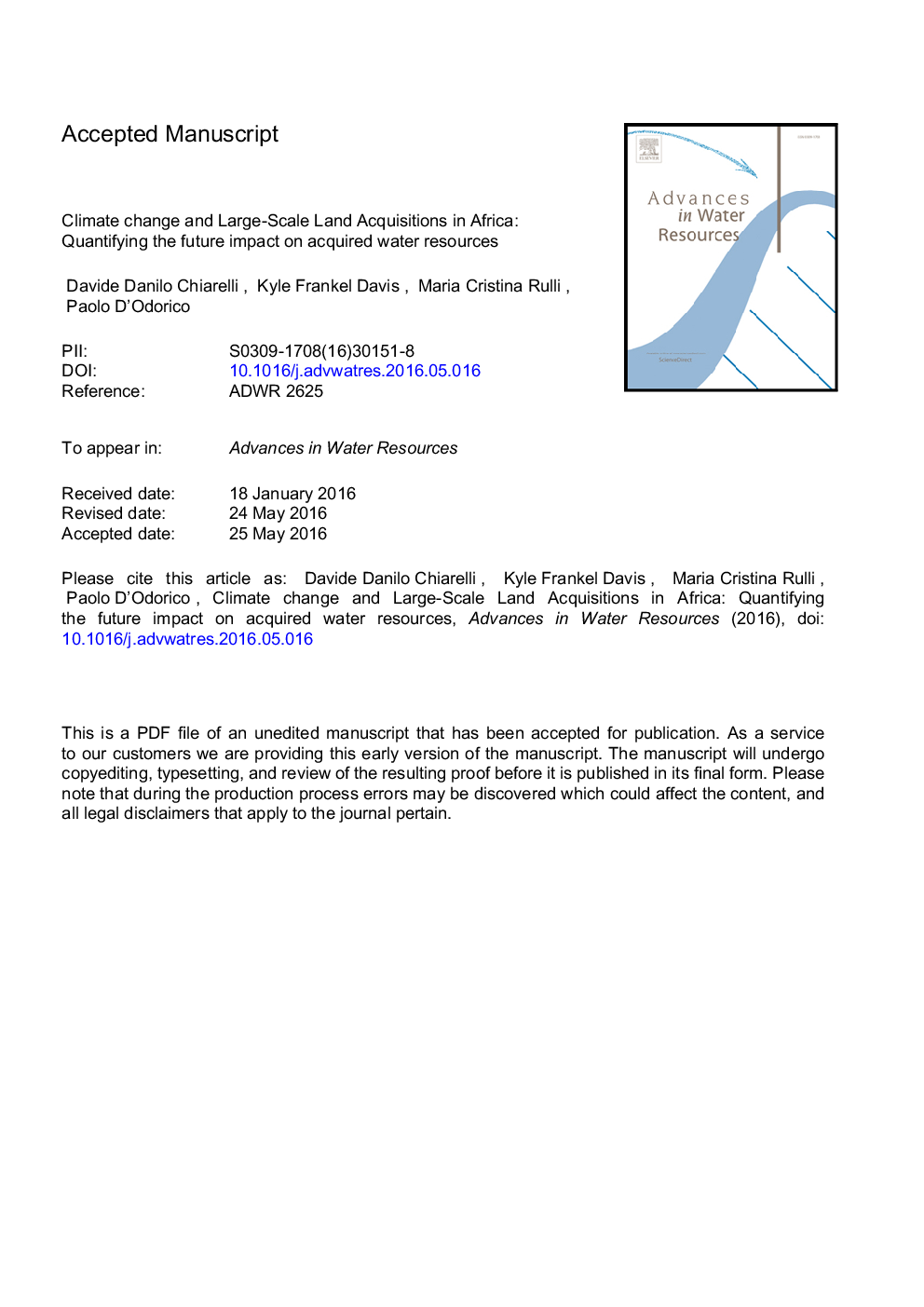| کد مقاله | کد نشریه | سال انتشار | مقاله انگلیسی | نسخه تمام متن |
|---|---|---|---|---|
| 6380734 | 1625617 | 2016 | 20 صفحه PDF | دانلود رایگان |
عنوان انگلیسی مقاله ISI
Climate change and large-scale land acquisitions in Africa: Quantifying the future impact on acquired water resources
ترجمه فارسی عنوان
تغییر آب و هوا و جمع آوری زمین های بزرگ در آفریقا: تعیین تاثیر آتی در منابع آب به دست آمده
دانلود مقاله + سفارش ترجمه
دانلود مقاله ISI انگلیسی
رایگان برای ایرانیان
کلمات کلیدی
نیاز آب زراعی، تغییر آب و هوا، خرید زمین در مقیاس وسیع، آب آبی و سبز، منابع آبی، محصولات سوخت زیستی،
موضوعات مرتبط
مهندسی و علوم پایه
علوم زمین و سیارات
فرآیندهای سطح زمین
چکیده انگلیسی
Pressure on agricultural land has markedly increased since the start of the century, driven by demographic growth, changes in diet, increasing biofuel demand, and globalization. To better ensure access to adequate land and water resources, many investors and countries began leasing large areas of agricultural land in the global South, a phenomenon often termed “large-scale land acquisition” (LSLA). To date, this global land rush has resulted in the appropriation of 41million hectares and about 490 km3 of freshwater resources, affecting rural livelihoods and local environments. It remains unclear to what extent land and water acquisitions contribute to the emergence of water-stress conditions in acquired areas, and how these demands for water may be impacted by climate change. Here we analyze 18 African countries - 20 Mha (or 80%) of LSLA for the continent - and estimate that under present climate 210 km3 yearâ1of water would be appropriated if all acquired areas were actively under production. We also find that consumptive use of irrigation water is disproportionately contributed by water-intensive biofuel crops. Using the IPCCA1B scenario, we find only small changes in green (â1.6%) and blue (+2.0%) water demand in targeted areas. With a 3 °C temperature increase, crop yields are expected to decrease up to 20% with a consequent increase in the water footprint. When the effect of increasing atmospheric CO2concentrations is accounted for, crop yields increase by as much as 40% with a decrease in water footprint up to 29%. The relative importance of CO2 fertilization and warming will therefore determine water appropriations and changes in water footprint under climate change scenarios.
ناشر
Database: Elsevier - ScienceDirect (ساینس دایرکت)
Journal: Advances in Water Resources - Volume 94, August 2016, Pages 231-237
Journal: Advances in Water Resources - Volume 94, August 2016, Pages 231-237
نویسندگان
Davide Danilo Chiarelli, Kyle Frankel Davis, Maria Cristina Rulli, Paolo D'Odorico,
